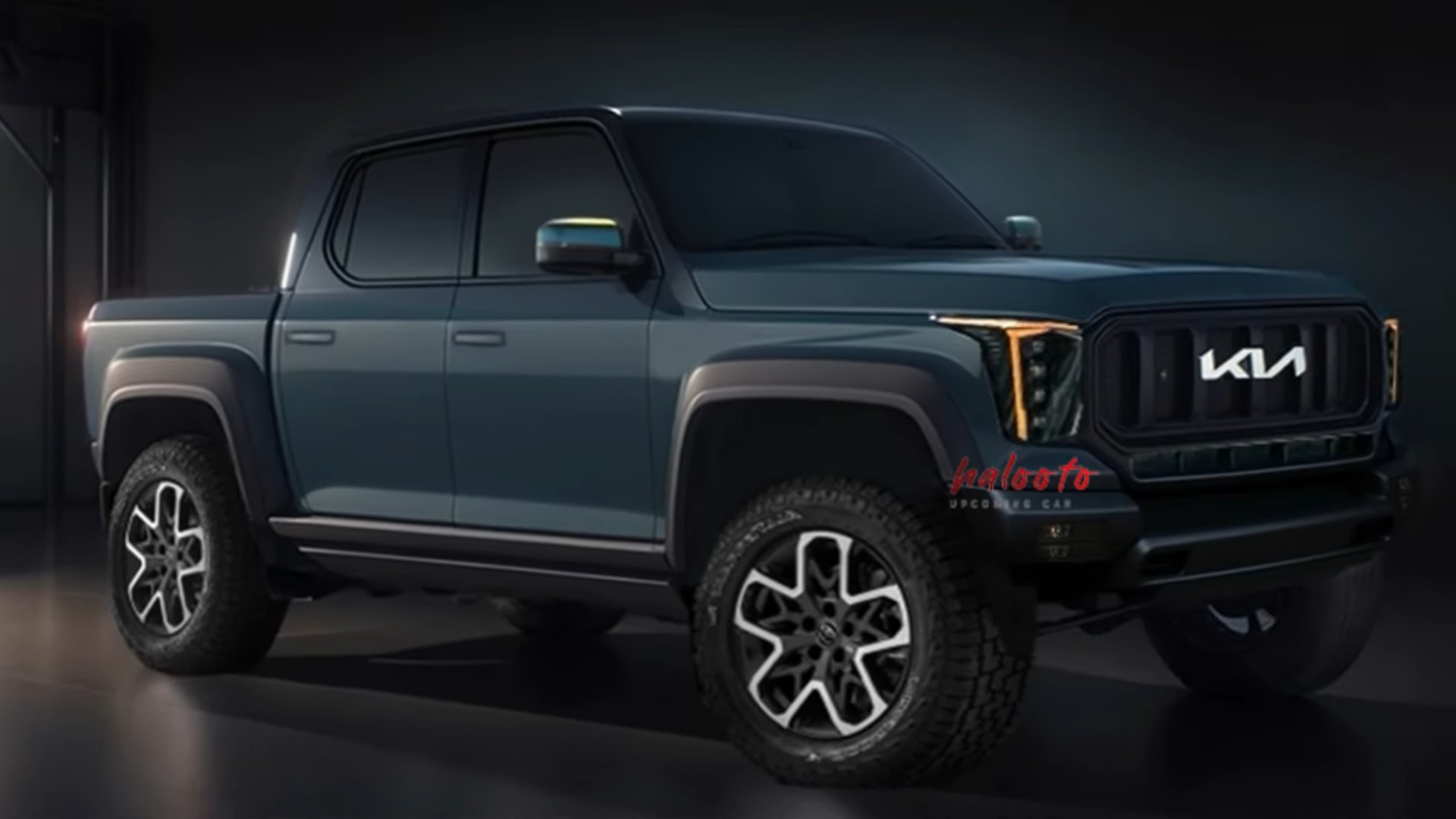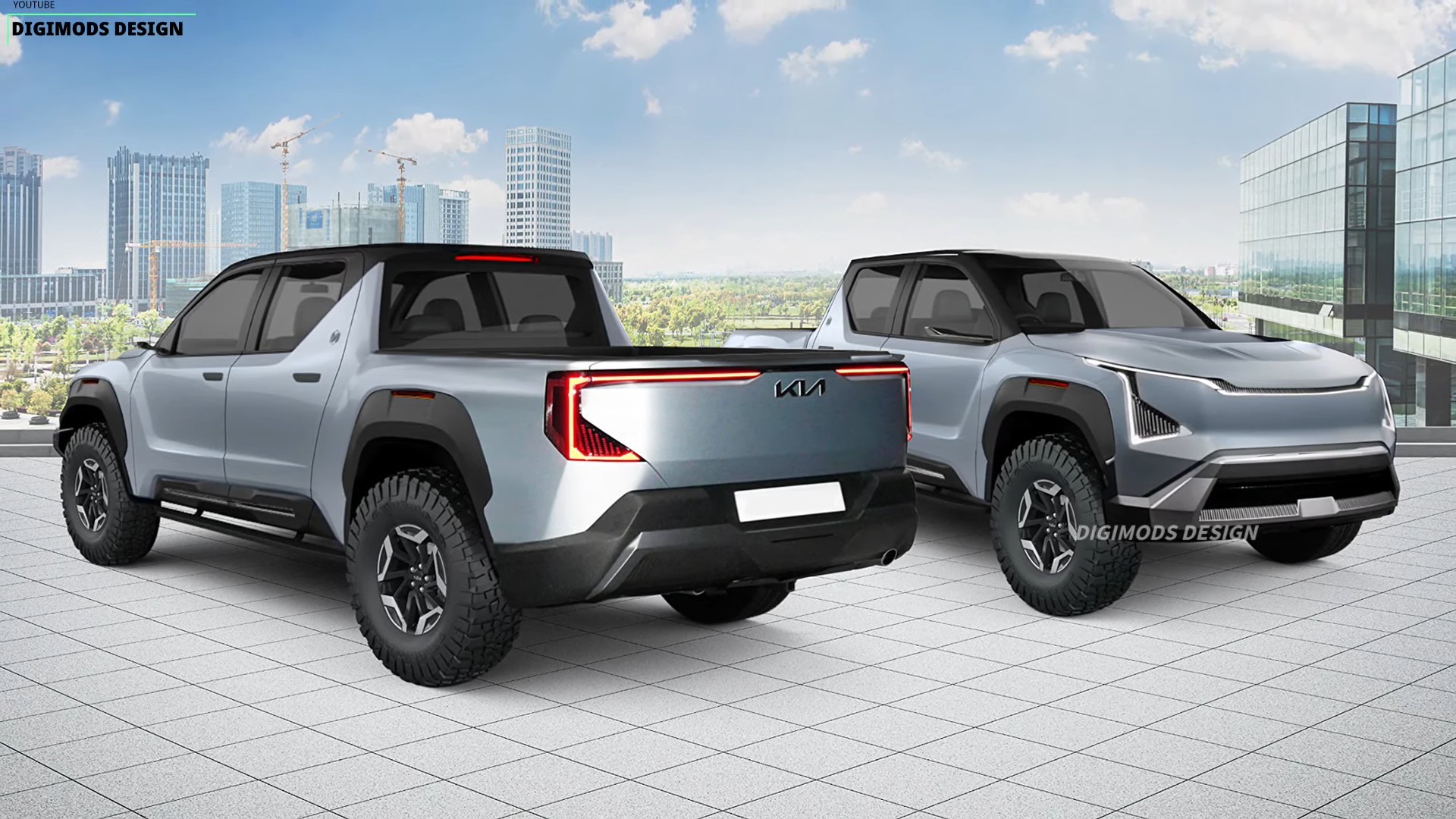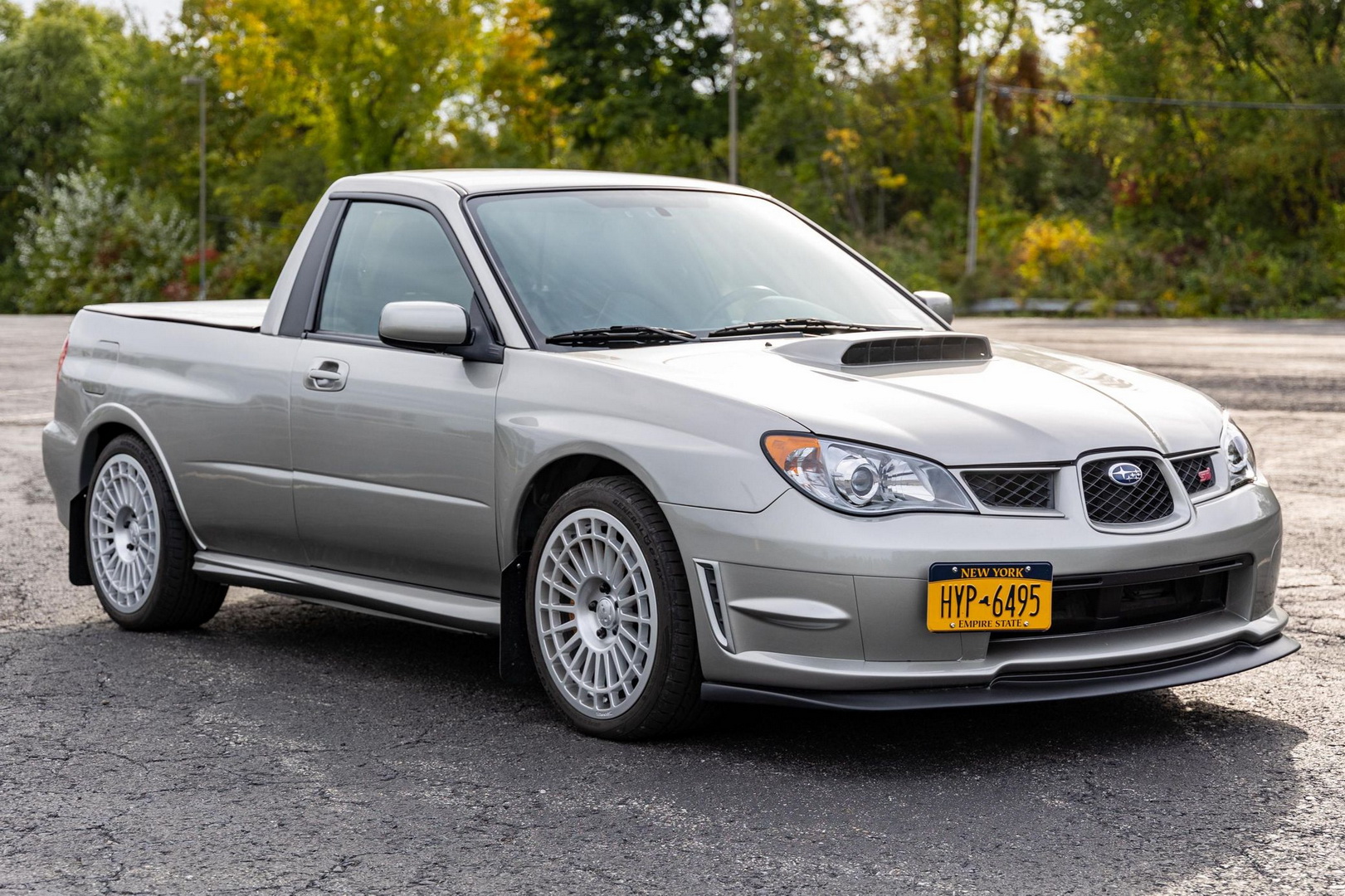Pickup Trucks Lifted: Elevating Performance, Aesthetics, and Capability pickup.truckstrend.com
The sight of a robust pickup truck, elevated far beyond its factory stance, commands attention. These aren’t just vehicles; they are statements of intent, whether for conquering rugged terrain, enhancing utility, or simply projecting an imposing aesthetic. "Pickup Trucks Lifted" refers to the modification of a truck’s suspension or body to increase its ground clearance, allowing for larger tires, improved off-road capability, and a distinctive, aggressive look. This practice is deeply rooted in the truck culture, appealing to enthusiasts who demand more from their vehicles than what a standard factory setup offers.
Lifting a pickup truck is more than just adding height; it’s a comprehensive modification that impacts everything from performance and handling to safety and maintenance. Understanding the nuances of these modifications is crucial for anyone considering joining the ranks of lifted truck owners. This article will delve into the world of lifted trucks, exploring the reasons behind these modifications, the different approaches, essential considerations, and practical advice for owners.
Pickup Trucks Lifted: Elevating Performance, Aesthetics, and Capability
Why Lift a Pickup Truck? The Multifaceted Benefits
The motivations for lifting a pickup truck are diverse, ranging from practical necessity to personal expression.
- Enhanced Off-Road Capability: This is arguably the primary reason for most lift kit installations. Increased ground clearance allows the truck to clear obstacles like rocks, logs, and deep ruts without damaging the undercarriage. Lifting also provides space for larger, more aggressive off-road tires, which significantly improve traction on challenging surfaces like mud, sand, and snow. Better approach, departure, and break-over angles are direct results, making the truck more agile and less prone to getting stuck.
- Aesthetic Appeal: For many, the look of a lifted truck is paramount. The raised stance, coupled with oversized tires and aftermarket wheels, creates an imposing, rugged, and customized appearance that stands out from stock vehicles. It’s a way for owners to personalize their truck and express their style.
- Improved Visibility: Sitting higher in traffic can provide a commanding view of the road ahead, potentially improving foresight and reaction time, especially in dense urban environments or on highways.
- Increased Payload and Towing Capacity (Indirectly): While a lift kit itself doesn’t directly increase a truck’s load-carrying or towing capacity, it often goes hand-in-hand with other modifications like heavy-duty springs, shocks, and air helper bags, which do enhance the vehicle’s ability to manage heavier loads or trailers without excessive squatting.
- Accommodation of Larger Tires: A lift is often a prerequisite for fitting larger diameter tires that wouldn’t otherwise clear the wheel wells or suspension components of a stock truck. Larger tires are beneficial for both off-road performance and the desired aesthetic.

Types of Lift Kits: Understanding the Options
When it comes to lifting a pickup truck, there are primarily two categories of lift kits, each with distinct mechanisms and implications:
- Body Lift Kits:

- Mechanism: These kits use spacers or blocks installed between the truck’s frame and the body mounts. The frame, suspension, and driveline remain at their original height relative to the ground.
- Pros: Generally less expensive, easier to install, and do not significantly alter the vehicle’s suspension geometry or ride quality. They are primarily used to gain clearance for larger tires.
- Cons: Only provide a small amount of lift (typically 1-3 inches). The gap between the frame and the body becomes visible, which some find unsightly. They do not increase ground clearance at the differentials or other undercarriage components. Steering extensions, bumper relocation brackets, and sometimes radiator drops are required.
- Suspension Lift Kits:
- Mechanism: These kits involve replacing or modifying components of the truck’s suspension system. This can include taller coil springs, longer shocks, lift blocks for leaf springs, extended control arms, drop brackets for independent front suspensions, and new steering components.
- Pros: Provide significant ground clearance (typically 2-12+ inches) for the entire vehicle, including the differentials. They allow for much larger tires and greatly enhance off-road performance. They often improve the vehicle’s articulation and overall ruggedness.
- Cons: More expensive and complex to install. Can significantly alter the vehicle’s ride quality, handling characteristics, and center of gravity. May require additional modifications like driveline angle correction, re-gearing, and brake line extensions to function correctly and safely. Can potentially void factory warranties.

Within suspension lifts, there are further sub-categories:
- Leveling Kits: Small suspension lifts (1-3 inches) designed to raise the front of the truck to match the factory rear height, eliminating the "nose-down" rake.
- Spacer Lifts: Involve placing spacers above or below the coil springs or struts. Cost-effective but can sometimes lead to a harsher ride or limit suspension down travel.
- Full Suspension Replacement: Replaces a significant portion of the factory suspension with aftermarket components designed for lift and performance, often including new control arms, knuckles, shocks, and springs. These are typically the most comprehensive and expensive options.
Choosing the Right Lift Kit: Important Considerations
Selecting the appropriate lift kit requires careful thought to ensure it meets your needs, budget, and vehicle’s capabilities.
- Purpose: What do you primarily use your truck for? If it’s mainly for aesthetics and fitting slightly larger tires, a body lift or leveling kit might suffice. For serious off-roading, a full suspension lift is essential.
- Budget: Lift kits range widely in price, from a few hundred dollars for leveling kits to several thousands for high-end full suspension systems, not including installation and additional modifications (tires, wheels, re-gearing).
- Desired Tire Size: The amount of lift you need is often dictated by the size of the tires you plan to install. Consult charts or seek expert advice to determine the minimum lift required for specific tire diameters.
- Vehicle Type and Drivetrain: Different trucks (e.g., Ford F-150 vs. Toyota Tacoma) and drivetrains (e.g., independent front suspension vs. solid axle) will have different lift kit options and considerations.
- Ride Quality and Handling: Larger lifts can change how your truck handles on the road. Some kits are designed to maintain or even improve ride quality, while others might result in a stiffer or bouncier ride.
- Professional Installation vs. DIY: While some mechanically inclined individuals can install certain kits, complex suspension lifts often require specialized tools, expertise, and proper alignment afterward. Professional installation ensures safety and correct operation.
- Warranty Implications: Installing an aftermarket lift kit can potentially void portions of your vehicle’s factory warranty, especially concerning suspension, drivetrain, and steering components. Check with your dealership before proceeding.
- Legal Regulations: Some states or regions have laws governing maximum vehicle height, tire protrusion, and fender coverage. Be aware of local regulations to ensure your lifted truck remains street legal.
The Installation Process and Post-Lift Adjustments
While a detailed "how-to" guide is beyond the scope of this article, understanding the general process is helpful. Installation typically involves:
- Pre-Installation Inspection: Checking for existing issues, rust, or worn components.
- Disassembly: Removing existing suspension components (shocks, springs, control arms, etc.) or loosening body mounts.
- Component Installation: Installing the new lift kit components, which can include spacers, extended shocks, new springs, control arms, steering knuckles, and driveline modifications.
- Reassembly: Putting the vehicle back together, ensuring all bolts are torqued to specification.
- Alignment: Crucially, a professional wheel alignment is required after any significant suspension modification to correct camber, caster, and toe angles. Without proper alignment, tire wear will be excessive, and handling will be compromised.
- Test Drive: Checking for any unusual noises, vibrations, or handling issues.
Practical Advice: Always use high-quality parts from reputable manufacturers. If you’re not confident in your mechanical skills, invest in professional installation. After installation, pay attention to how the truck drives; any new vibrations, steering issues, or strange noises should be addressed immediately.
Driving a Lifted Truck: New Dynamics
Driving a lifted truck introduces new dynamics that owners must be aware of:
- Higher Center of Gravity: This is the most significant change. A higher center of gravity increases the risk of rollover, especially during sharp turns or evasive maneuvers. Drive cautiously, reduce speed in corners, and avoid sudden movements.
- Braking Performance: Larger, heavier tires can increase stopping distances. Upgrading brakes (larger rotors, calipers) might be necessary for optimal safety.
- Steering Feel: Lift kits can alter steering geometry, potentially leading to a looser or less precise steering feel. Proper alignment and quality components help mitigate this.
- Fuel Economy: Larger, heavier, and more aggressive tires, combined with increased aerodynamic drag from the lift, will almost certainly reduce fuel efficiency. Re-gearing the differentials can help restore some of the lost power and improve drivability, but it won’t fully offset the fuel economy hit.
- Entering/Exiting: The increased height can make it challenging for shorter individuals or children to enter and exit the vehicle. Side steps or running boards are highly recommended.
Maintenance and Care for Lifted Trucks
Lifted trucks often require more diligent maintenance due to the added stress on components:
- Regular Inspections: Frequently check suspension components, steering linkages, driveline angles, and tire wear.
- Lubrication: Components with grease fittings (e.g., certain control arms, U-joints) need regular lubrication.
- Tire Pressure and Rotation: Maintain correct tire pressure for oversized tires (which often differ from factory recommendations) and rotate them regularly to ensure even wear.
- Alignment Checks: Get regular alignments, especially after any hard off-road use, to prevent premature tire wear and maintain proper handling.
- Component Replacement: Be prepared for potentially shorter lifespans for certain driveline or steering components due to increased angles and stress.
Potential Challenges and Solutions
- Driveline Vibrations: Lifting a truck, especially with solid axles, can alter driveline angles, leading to vibrations. Solutions include transfer case drop kits, shims, or a double cardan (CV) driveshaft.
- Steering Geometry Issues: Changes in steering geometry can cause "bump steer" (steering wheel jerking over bumps) or wandering. Solutions involve proper alignment, adjustable control arms, and high-quality steering components.
- Accelerated Component Wear: Ball joints, tie rods, and universal joints may wear out faster due to increased angles and stress. Using heavy-duty or aftermarket components can improve durability.
- Warranty Concerns: As mentioned, be aware that modifications can affect your warranty.
- Cost Creep: The initial cost of the lift kit is often just the beginning. Factor in installation, larger tires and wheels, re-gearing, and potential maintenance.
Estimated Price Table for Lifted Pickup Truck Modifications
Please note: These are estimated price ranges and can vary significantly based on vehicle make/model, brand reputation, component quality, labor rates, and geographic location. These prices generally do not include the cost of the truck itself.
| Component/Service Category | Estimated Price Range (USD) | Notes |
|---|---|---|
| Lift Kits | ||
| Body Lift Kit (1-3 inches) | $200 – $600 | Least expensive, mostly for aesthetics and tire clearance. |
| Leveling Kit (1-3 inches front) | $100 – $400 | Simple spacers to level the truck’s stance. |
| Basic Suspension Lift (2-4 inches) | $400 – $1,500 | Often includes spacers, extended shocks, or basic springs/blocks. |
| Medium Suspension Lift (4-6 inches) | $1,500 – $4,000 | More comprehensive kits, may include new control arms, knuckles, and better shocks. |
| Large/Performance Suspension Lift (6+ inches) | $4,000 – $10,000+ | High-end systems with new crossmembers, coil-overs, reservoir shocks, and full component replacement. |
| Installation Labor | ||
| Body Lift Installation | $300 – $800 | Less complex, fewer hours. |
| Suspension Lift Installation | $600 – $2,000+ | Varies greatly by lift height and complexity. More complex lifts take longer. |
| Wheel Alignment | $80 – $200 | Absolutely essential after any suspension modification. |
| Related Upgrades | ||
| Larger Tires (Set of 4) | $800 – $3,000+ | Varies by size, brand, and type (all-terrain, mud-terrain). |
| Aftermarket Wheels (Set of 4) | $600 – $2,500+ | Varies by material, design, and brand. |
| Re-gearing (Front & Rear Differentials) | $1,000 – $3,000+ | Essential for restoring power and fuel economy after installing significantly larger tires. Includes parts and labor. |
| Driveshaft Modifications | $300 – $1,000+ | For correcting driveline angles (e.g., shims, CV driveshaft). |
| Extended Brake Lines | $100 – $300 | Often required for larger suspension lifts. |
| Side Steps/Running Boards | $200 – $1,000+ | For easier entry/exit. |
| Fender Flares | $200 – $800 | To cover protruding tires and comply with legal requirements. |
| Total Estimated Cost (Excluding Truck Purchase) | $2,000 – $15,000+ | A basic lift with tires might be on the lower end, while a full high-performance setup with all upgrades could easily exceed $15,000. |
Frequently Asked Questions (FAQ) about Lifted Pickup Trucks
Q1: Will lifting my truck void its warranty?
A1: Potentially, yes. While the Magnuson-Moss Warranty Act protects consumers, dealerships can deny warranty claims if they can prove that the aftermarket modification (the lift kit) directly caused the issue. It’s best to check with your dealership beforehand.
Q2: How much lift is too much?
A2: "Too much" is subjective and depends on your goals. For daily driving, lifts over 6 inches can significantly impact handling, fuel economy, and component longevity. For extreme off-roading, larger lifts might be necessary but come with greater compromises. Legality also plays a role in some areas.
Q3: Do I need new tires and wheels after a lift?
A3: Most often, yes. The primary reason for lifting is usually to accommodate larger tires. The increased height also often necessitates wheels with different offsets to prevent rubbing and achieve the desired stance.
Q4: Will my fuel economy get worse after lifting?
A4: Almost certainly. Larger, heavier tires, increased rolling resistance, altered gearing, and greater aerodynamic drag all contribute to a decrease in fuel efficiency. Re-gearing can help mitigate this but won’t eliminate it.
Q5: Is it safe to lift my truck myself?
A5: While simple leveling kits or body lifts might be DIY-friendly for experienced mechanics, complex suspension lifts are best left to professionals. They require specialized tools, knowledge of suspension geometry, and post-installation alignment, all crucial for safety and proper function.
Q6: What is "re-gearing" and why is it important?
A6: Re-gearing involves changing the differential gears to a different ratio. When you install larger tires, the effective gear ratio changes, making the truck feel sluggish and reducing power. Re-gearing restores the engine’s optimal RPM range for a given speed, improving acceleration, drivability, and helping to compensate for the larger tires’ impact on power and efficiency.
Q7: How does a lifted truck handle differently on the road?
A7: Lifted trucks have a higher center of gravity, making them more prone to body roll and increasing the risk of rollover, especially in sharp turns or emergency maneuvers. They may also have a firmer ride, altered steering feel, and longer braking distances. Drivers need to adjust their driving style accordingly.
Conclusion: Reaching New Heights
Lifting a pickup truck is a transformative modification that can dramatically alter a vehicle’s appearance, performance, and capability. Whether driven by a passion for off-roading, a desire for a commanding presence, or the need for increased utility, a well-executed lift can elevate the driving experience. However, it’s a decision that requires thorough research, careful planning, and a commitment to proper installation and ongoing maintenance. By understanding the different types of kits, the critical considerations, and the potential challenges, truck enthusiasts can confidently embark on their journey to new heights, enjoying the unique benefits and distinct personality that a lifted pickup truck brings.


